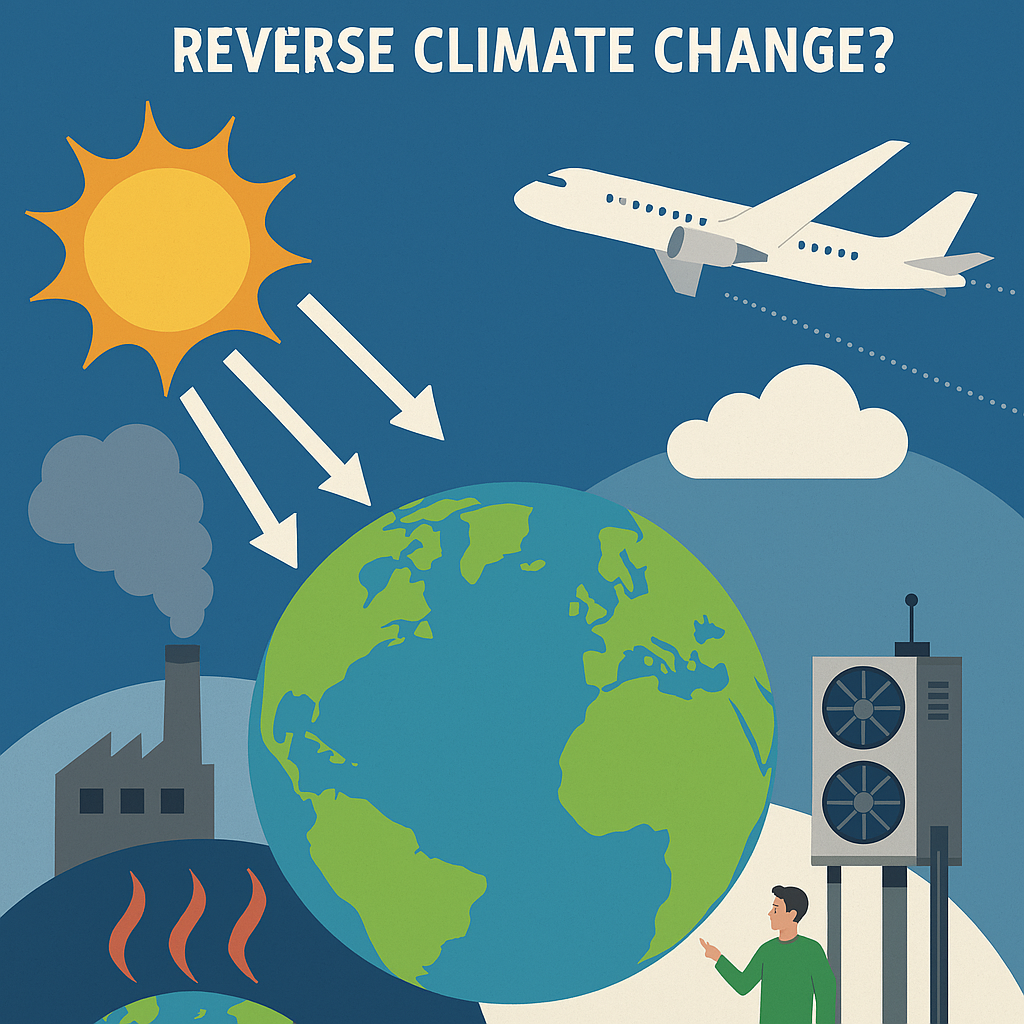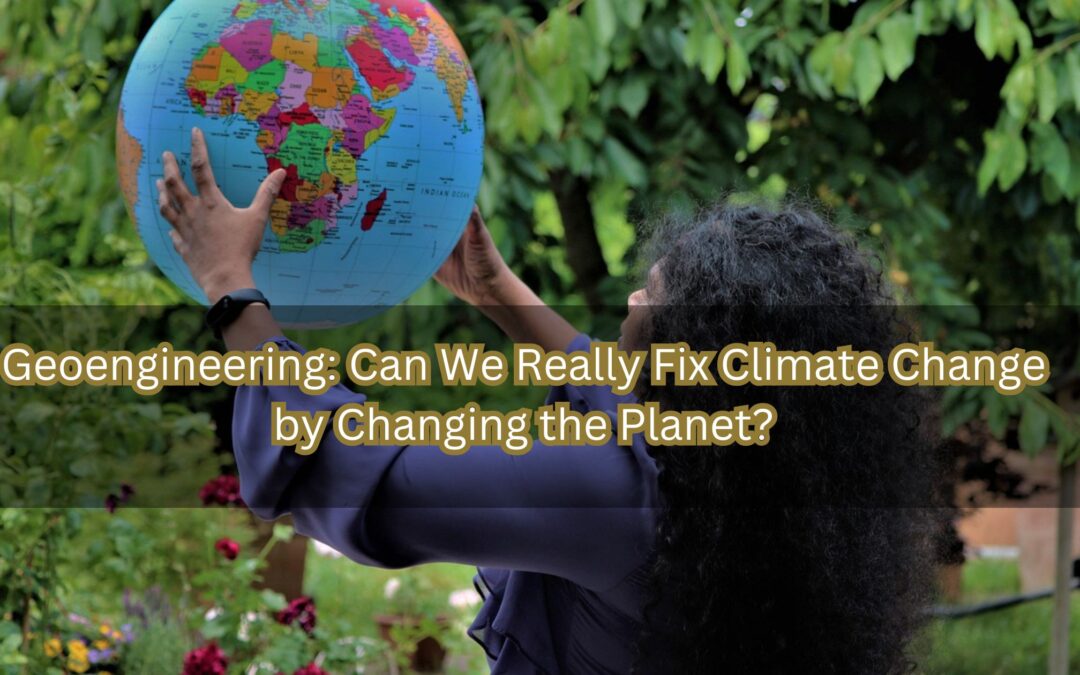Geoengineering refers to the large-scale manipulation of Earth’s natural systems to counteract the effects of climate change. It includes strategies like carbon dioxide removal (CDR), which aims to extract excess CO₂ from the atmosphere, and solar radiation management (SRM), which seeks to reflect a portion of sunlight back into space to cool the planet. While these technologies offer potential tools to slow global warming, they also raise significant environmental, ethical, and political concerns. As the climate crisis intensifies, geoengineering is becoming a more widely discussed—and debated—component of potential climate action plans.
“Can we really change the planet to fix climate change?” my friend asked over coffee last week.
It’s a fair question. More and more scientists are talking about geoengineering, and it’s no longer just science fiction. From shooting particles into the sky to sucking carbon straight out of the air, geoengineering offers wild, bold, and sometimes scary ideas to cool the Earth.
But what is geoengineering really all about—and can it actually work?
What Is Geoengineering?
“Geoengineering is like hitting the emergency brake on climate change,” says Dr. Rachel Sanders, a climate scientist at the Union of Concerned Scientists.
In simple terms, geoengineering refers to large-scale, human-made solutions designed to change Earth’s systems and reduce global warming. It’s often seen as a last-resort strategy if things get really bad—or as a temporary fix while we transition to renewable energy.
There are two big types of geoengineering:
- Carbon Dioxide Removal (CDR) – This includes methods to pull CO₂ out of the air, such as planting more trees (afforestation), or using high-tech machines called direct air capture systems.
- Solar Radiation Management (SRM) – This means reflecting sunlight away from Earth to cool things down. One example is injecting tiny particles into the atmosphere to mimic the cooling effect of volcanoes.
You can learn more about these strategies from NASA’s official climate page.
Why Are People Talking About Geoengineering Now?
“Because we’re running out of time,” says environmental activist Jane Liu. “Even if we stop burning fossil fuels tomorrow, the CO₂ we’ve already released will keep heating the planet for decades.”
With climate disasters getting worse—like wildfires, floods, and hurricanes—many scientists believe we need a backup plan. Geoengineering might offer that safety net.
For example, the idea of using stratospheric aerosol injection is based on what happens when volcanoes erupt. When Mount Pinatubo erupted in 1991, it lowered global temperatures by 0.6°C for about two years.
That kind of temporary cooling might buy us time to fix our deeper problems.

The Risks of Geoengineering
Of course, it’s not all good news.
“Messing with Earth’s systems could backfire,” warns Dr. Sanders. “If we try to change the climate too quickly or without enough research, we could make things worse.”
Some risks include:
- Disrupted rainfall and monsoons, especially in places like Africa and South Asia
- Termination shock, where stopping geoengineering suddenly could cause temperatures to spike
- Political problems, since one country could make decisions that affect the whole planet
There’s also a moral hazard—if we rely too much on geoengineering, we might stop working to cut emissions and change our habits.
Should We Use Geoengineering?
The truth? There’s no simple answer.
Geoengineering is not a magic bullet. It’s not a replacement for switching to clean energy, driving less, or protecting forests. But it might be part of a larger climate solution, especially if we use it responsibly and with global cooperation.
As the team at Project Drawdown explains, we need a mix of strategies—including conservation, innovation, and smart technology—to tackle the climate crisis.
Final Thoughts: Be Informed, Stay Involved
“Everyone should be part of this conversation,” says Jane. “It’s your planet too.”
Geoengineering is a big idea with big consequences. It’s exciting and scary all at once. But we can’t ignore it.
Want to dig deeper into climate solutions like geoengineering?
Join our vibrant Ecolonomic Action Team where we explore bold ideas, real-world examples, and sustainable actions for a better future.
Visit EATCommunity.com now and start learning how you can be part of the solution.
Let’s make the planet better—together.
Related Articles, References, and Resources:
- The Power of Reforestation: A Natural Solution to Climate Change
- How You Can Spread Global Warming Awareness
- NASA Climate – Geoengineering and Climate Change
- Union of Concerned Scientists – What is Geoengineering?
- Project Drawdown – Solutions to Climate Change
- National Academies of Sciences – Reflecting Sunlight: Recommendations for Solar Geoengineering Research and Research Governance
- Carbon180 – Carbon Removal 101
- World Economic Forum – Geoengineering: A Quick Guide
- EAT Community – Explore Climate Intervention Tools and Strategies



